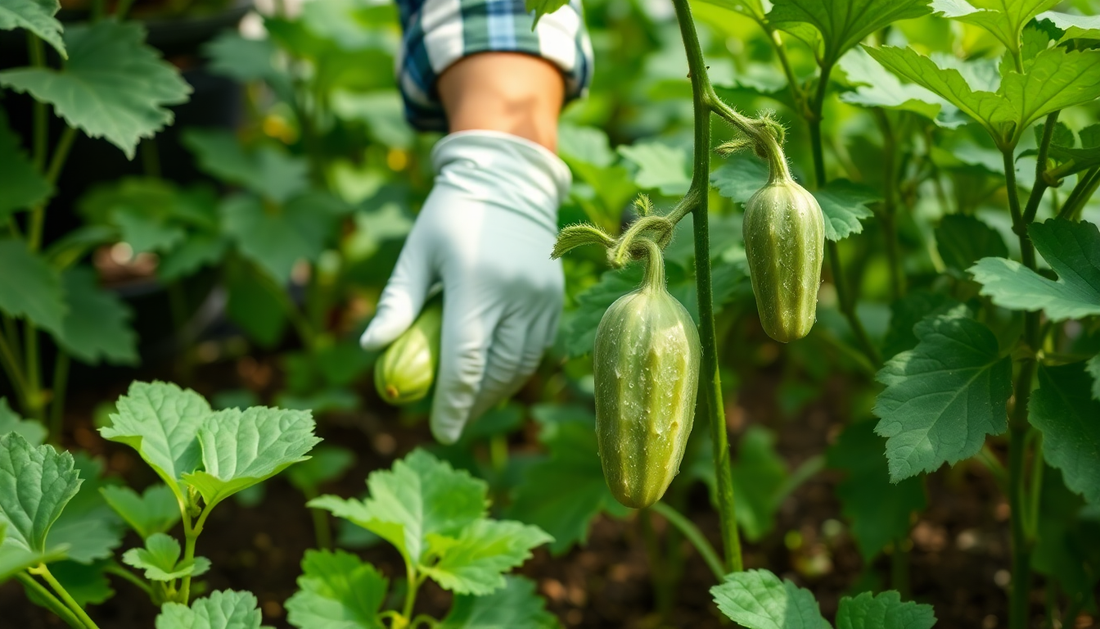
Protecting Your Garden: The Best Ways to Prevent Cucumber Mosaic Virus
As a passionate gardener, there's nothing more frustrating than watching your plants succumb to disease. One of the most common and devastating viral infections that can wreak havoc in your garden is the Cucumber Mosaic Virus (CMV). This highly contagious virus can infect a wide range of plants, including cucumbers, squash, melons, tomatoes, and even ornamental flowers. However, with the right preventative measures, you can safeguard your garden and enjoy a bountiful harvest.
In this comprehensive guide, we'll explore the best strategies to prevent the spread of Cucumber Mosaic Virus and keep your plants healthy and thriving.
Understanding Cucumber Mosaic Virus
Cucumber Mosaic Virus is a highly adaptable and widespread plant virus that can infect over 1,000 different plant species, including many of the most popular vegetables and ornamentals. The virus is primarily transmitted by aphids, which act as vectors, carrying the virus from infected plants to healthy ones.
The symptoms of CMV can vary depending on the plant species, but typically include:
- Mottled, discolored leaves with a mosaic-like pattern
- Stunted growth and deformation of leaves, stems, and fruits
- Reduced yield and poor fruit quality
Once a plant is infected, there is no cure for Cucumber Mosaic Virus. The virus can persist in the plant's tissues, and even if the plant appears to recover, it can continue to harbor the virus and serve as a source of infection for other plants.
Preventative Measures
The key to managing Cucumber Mosaic Virus is to focus on prevention. By implementing a comprehensive strategy, you can significantly reduce the risk of your plants becoming infected and minimize the impact of the virus on your garden.
1. Start with Healthy Plants
One of the most effective ways to prevent Cucumber Mosaic Virus is to start with healthy, virus-free plants. When purchasing seedlings or transplants, be sure to source them from reputable suppliers who can guarantee that the plants are free of CMV and other viral infections.
2. Encourage Beneficial Insects
Aphids are the primary vectors of Cucumber Mosaic Virus, so it's essential to encourage the presence of beneficial insects that prey on aphids. Ladybugs, lacewings, and parasitic wasps are all natural aphid predators that can help keep the aphid population in check and reduce the risk of virus transmission.
3. Practice Good Sanitation
Maintaining good sanitation practices in your garden is crucial for preventing the spread of Cucumber Mosaic Virus. Regularly remove and dispose of any infected plant material, including leaves, stems, and fruits. Avoid composting infected plants, as the virus can persist in the compost and be reintroduced to your garden.
4. Use Resistant Varieties
When possible, choose cucumber, squash, and other vegetable varieties that are bred to be resistant or tolerant to Cucumber Mosaic Virus. These varieties have been developed to have natural defenses against the virus, making them less susceptible to infection.
5. Implement Physical Barriers
Physical barriers, such as row covers or insect netting, can help prevent aphids and other virus-carrying insects from accessing your plants. These barriers create a physical barrier that prevents the insects from reaching the plants and transmitting the virus.
6. Practice Crop Rotation
Rotating your crops from year to year can help break the cycle of Cucumber Mosaic Virus. By planting different crops in the same area, you can reduce the risk of the virus overwintering in the soil or plant debris and infecting your next crop.
7. Use Organic Mulches
Applying organic mulches, such as straw, wood chips, or leaves, around the base of your plants can help deter aphids and other virus-carrying insects. The mulch creates a physical barrier that makes it more difficult for the insects to access the plants.
8. Monitor and Act Quickly
Regularly inspect your plants for signs of Cucumber Mosaic Virus, such as mottled leaves or stunted growth. If you identify any infected plants, remove them immediately and dispose of them properly to prevent the virus from spreading.
Conclusion
Protecting your garden from Cucumber Mosaic Virus requires a multi-faceted approach that combines preventative measures, good gardening practices, and a keen eye for early detection. By implementing these strategies, you can significantly reduce the risk of your plants becoming infected and enjoy a bountiful, healthy harvest.
Remember, prevention is key when it comes to managing viral plant diseases. By taking proactive steps to safeguard your garden, you can ensure that your plants thrive and your gardening efforts are rewarded with a beautiful and productive garden.
Happy gardening!






No comments